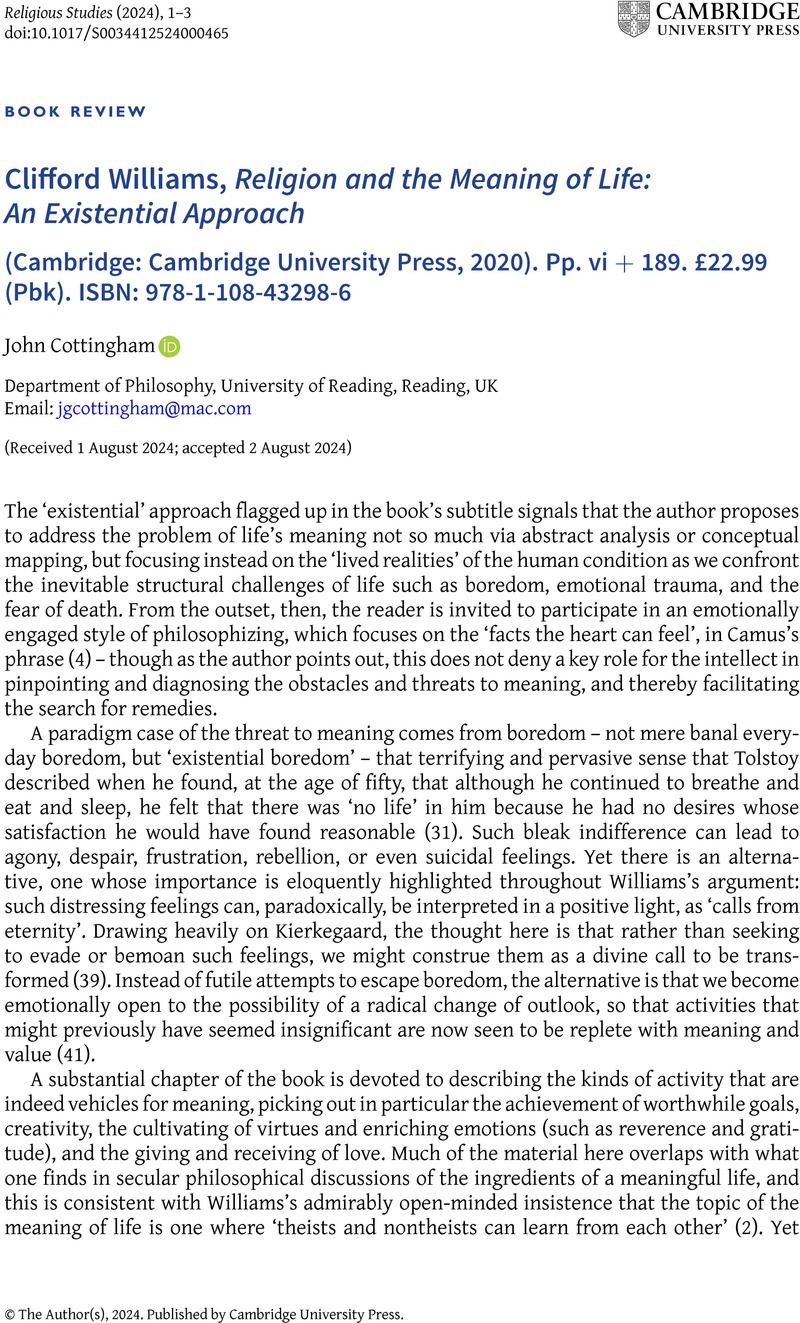No CrossRef data available.
Article contents
Clifford Williams, Religion and the Meaning of Life: An Existential Approach (Cambridge: Cambridge University Press, 2020). Pp. vi + 189. £22.99 (Pbk). ISBN: 978-1-108-43298-6
Review products
Clifford Williams, Religion and the Meaning of Life: An Existential Approach (Cambridge: Cambridge University Press, 2020). Pp. vi + 189. £22.99 (Pbk). ISBN: 978-1-108-43298-6
Published online by Cambridge University Press: 07 November 2024
Abstract
An abstract is not available for this content so a preview has been provided. Please use the Get access link above for information on how to access this content.

Information
- Type
- Book Review
- Information
- Copyright
- © The Author(s), 2024. Published by Cambridge University Press.


